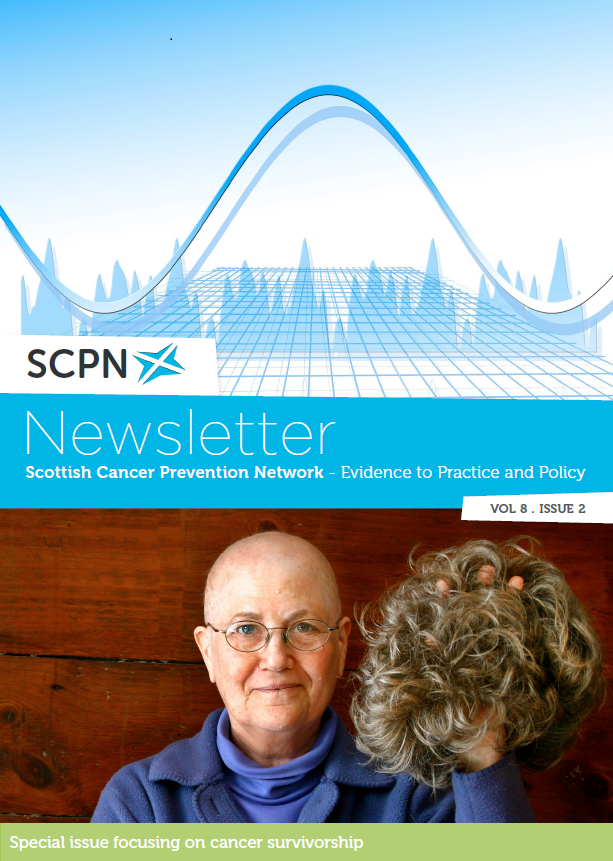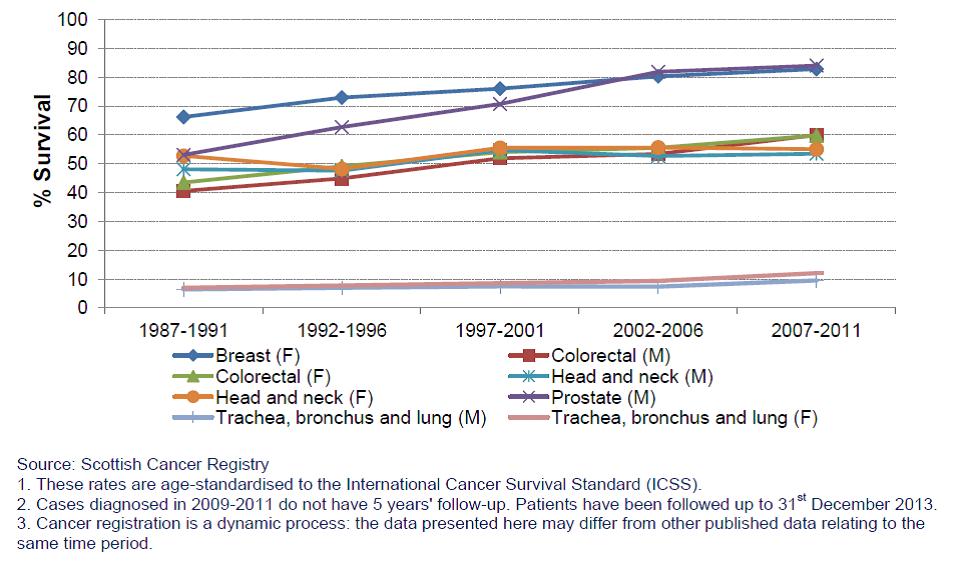
Cancer survivorship – living with and beyond cancer

02 May 17 |
Cancer survivorship is a term we are all becoming more familiar with and in its widest sense includes the time from a cancer diagnosis being made to death. It is thought there may be currently around 14.8m cancer survivors in Europe (about 2% of the population)[1]; more than 15.5m cancer survivors in the US (roughly 5% of the total population)[2] and in Australia, cancer survivors accounted for 4.1% of the population in 2010.[3]
Overall survival rates have improved over recent years but there are variations by country due to their age profile, the cancers being diagnosed, access to screening, early diagnosis and treatment. A study using population-based registries in 67 countries and 25.7m patients, found that net survival rates for breast cancer ranged from at least 80% in 34 countries, to 50-60% in India and South Africa.[4] Prostate-cancer survival rates ranged from less than 40% to over 90%, while the survival rates for stomach cancer were found to be less than 20% in some European countries including the UK, but over 50% in Japan and South Korea.
Age and stage matter: the younger the patient is at diagnosis, the higher the survival rate and the stage of the cancer at diagnosis also has an impact. A Japanese study reported a five year survival rate for all cancers (grouped) of 68.8%, but this ranged from 96.2% for cancers diagnosed at Stage I, to just 20% for those diagnosed at Stage IV.[5]
The incidence of cancer increases with age so our ageing population, coupled with an improvement in survival rates, means that the number of people living with or beyond cancer is growing every year. This demands that our attentions are turned to ways to improve their quality of life by addressing patients’ needs at each stage of the cancer journey from diagnosis to long term care. A major challenge for all those in the planning and delivery of those health care needs.
The Economist Intelligence Unit has written articles on the challenges of providing integrated care for cancer survivors aimed at healthcare professionals, cancer survivors and policymakers respectively which may be of interest to those on the coal face.[6-8]
References
- JH Rowland, EE Kent et al, “Cancer survivorship research in Europe and the United States: Where have we been, where are we going, and what can we learn from each other?” Cancer. 2013 Jun 1; 119(0 11): 2094–2108. doi: 10.1002/cncr.28060. Available at: http://dx.doi.org/10.1002/cncr.28060
- ACS Report: Number of US Cancer Survivors Expected to Exceed 20 Million by 2026, American Cancer Society, June 2nd 2016. Available at: http://www.cancer.org/cancer/news/news/report-number-of-cancer-survivors-continues-to-grow
- Australian Government, Cancer Australia, All cancers in Australia. Available at: https://canceraustralia.gov.au/affected-cancer/what-cancer/cancer-australia-statistics
- C Allemani et al, 2015, “Global surveillance of cancer survival 1995–2009: analysis of individual data for 25,676,887 patients from 279 population-based registries in 67 countries (CONCORD-2)”, The Lancet, Volume 385, Issue 9972, 977-1010, March 2015. Available at: https://www.ncbi.nlm.nih.gov/pubmed/25467588
- Foundation for Promotion of Cancer Research, Cancer Statistics in Japan – 2015, March 2016. Available at: http://ganjoho.jp/data/reg_stat/statistics/brochure/2015/cancer_statistics_2015.pdf
- The Economist Intelligence Unit: Providing integrated care for cancer survivors: The primary-care perspective. Available at: http://cancersurvivorship.eiu.com/providing-integrated-care-for-cancer-survivors-the-primary-care-perspective/
- The Economist Intelligence Unit: Providing integrated care for cancer survivors: The patients’ perspective. Available at: http://cancersurvivorship.eiu.com/providing-integrated-care-for-cancer-survivors-the-patients-perspective/
- The Economist Intelligence Unit: Providing integrated care for cancer survivors: The policy makers perspective. Available at: http://cancersurvivorship.eiu.com/providing-integrated-care-for-cancer-survivors-the-policymakers-perspective/
This article was originally published in The SCPN Newsletter Volume 8, Issue 2. Read the digital newsletter below using Issuu, or feel free to download the PDF.
View the PDF

The SCPN Newsletter: Volume 8, Issue 2
In this issue we have a section focusing on cancer survivorship as well as our regular features - examples of good practice, public health initiatives, recipes and interesting studies which contribute to the body of evidence on cancer prevention.
